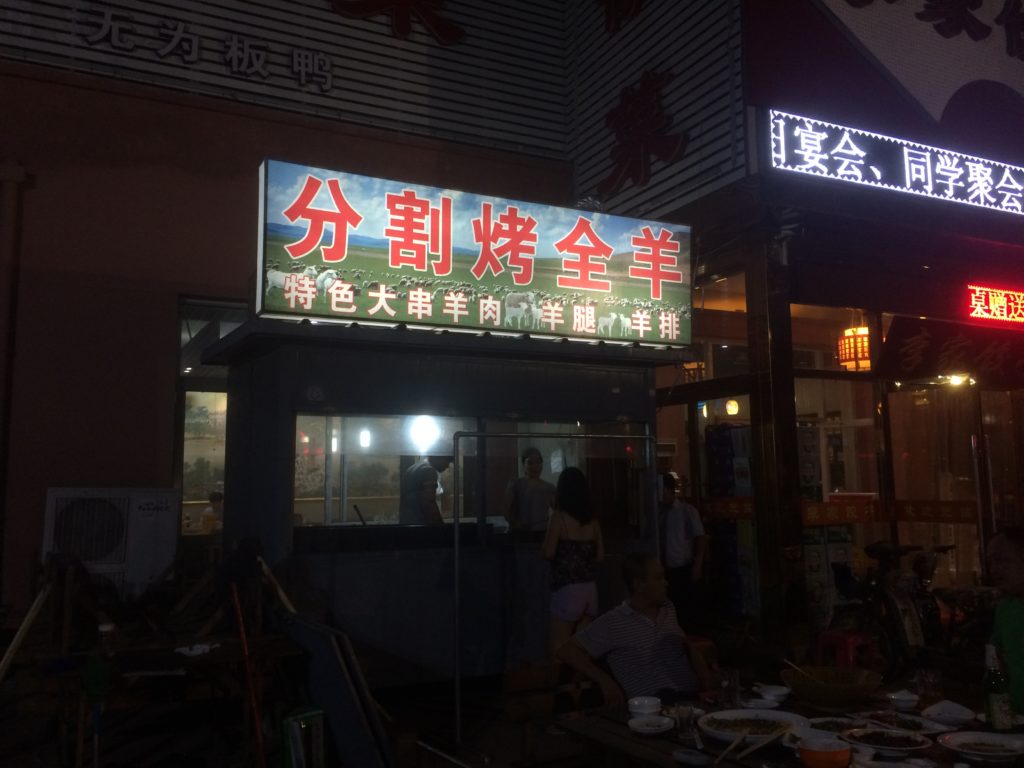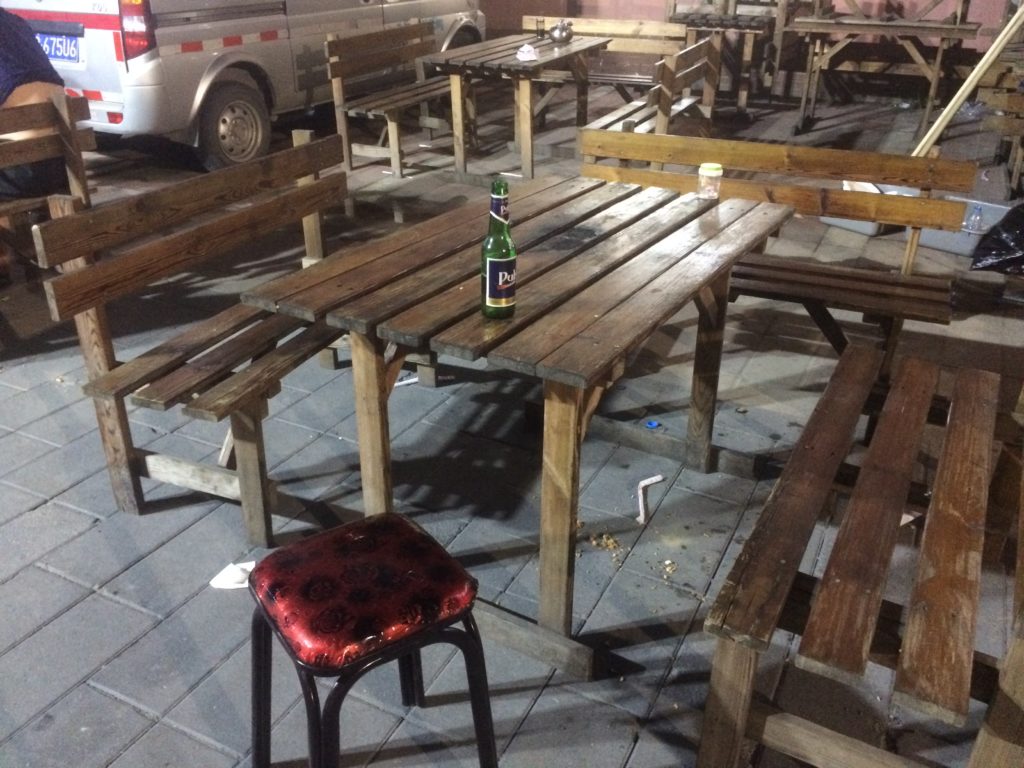Locals and expats alike are well aware that street food is an integral part of Beijing culture, from coal-baked sweet potatoes, brown and dusty on the outside but soft and orange-gold on the inside, to tanghulu with its shiny, jewel-like glazed exterior, in the wintertime, to jianbing, yielding on the outside and crispy on the inside, in the summer. Another street food that seems to be fading away more and more is yangrouchuan, or chuan for short. You may know, it is like a thin kebab, a skewer of lamb meat thinner than your index finger, often cooked outdoors, while the smoke wafts over the tables, aromatic and very hot, just like the meat it is cooking.

No, these are not luxurious dining spots, and if your child is very young and you feel awkward letting them run around too much perhaps wait until they’re older to explore this side of Beijing’s street food scene (although many locals don’t mind letting their kids run around at these spots). No, you don’t get a set of plates and cutlery, and you don’t sit at a well-set table. There are benches outdoors and there may also be some seats indoors, and you may choose where to sit depending on the weather conditions and your preference. Although there is no hard rule, it is customary that people come out to eat yangrouchuan at night. It is a group activity, people often come with a few family and friends and eat, drink, chat, and laugh for a while.

Author Wang Zengqi once wrote about this particular facet of Northern Chinese culture, of the meat eating with unreserved abandon, especially when winter comes and the cold sets in. It is very different from the kind of eating in the south of China, in places like Guangzhou and Hangzhou, with dainty sweets and delicate desserts.
It encapsulates a kind of boldness, a straightforward roughness that is uncalculating and unassuming that has been built into the cultural stereotype of the north of China for longer than we know. The toughness required of the people by the biting cold in the winter and the scalding hot in the summer was somehow transcribed into the cuisine and food culture of this region long ago, and much of it remains in the culture of street food today, although it is undeniably in decline. Take this street in Changping, very far out yes, beyond the fifth ring, called Gouzitou Street, meaning “the head of a creek”—it used to be filled with these vendors of chuan, with signs of neon red light drawing out exactly that character. We first lived here in 2000, at the turn of the century, and we’ve moved away and come back more than once since. Each time we come back, there are fewer of those signs. Now, from what I could see that one night, there is only this one shop. I suppose the world is always changing, and in change there is always loss, and the loss of something that is so basic, so lacking in all gilding, may not be missed by most, yet it may be a reminder to some that what seems unrefined may be the remnants of a subculture that contains emotions and meanings that run deeper than we can easily fathom today.
Gouzitou Street, Changping District, Beijing 沟自头路,昌平区,北京 (135 5293 0715)




